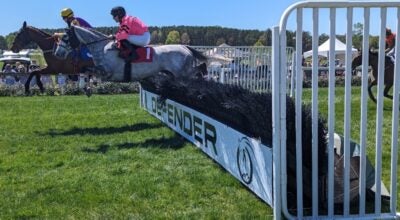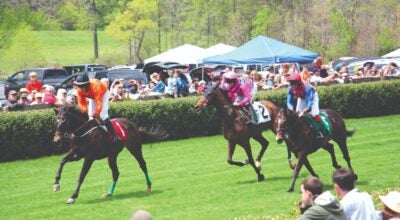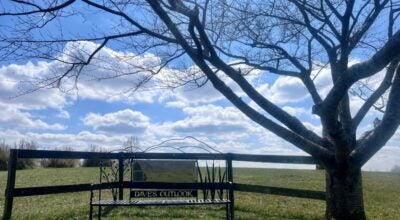Honoring a legendary pioneer in the equestrian world
Published 8:00 am Wednesday, August 1, 2018
International conference to discuss equine welfare
ROME — This September, as the world comes to the Foothills for the World Equestrian Games, equitation scientists from around the world are traveling to Italy to ask, “What is a good life for horses?”
This is the topic of the International Society for Equitation Science 2018 conference, which will take place at the military academy Lanceri di Montebello in Rome.
The conference theme will include discussion on topics of equine welfare such as training, feeding, housing, mental state, health and behavior. The conference will also celebrate the 150th anniversary of the birth of Italian Army Captain Federico Caprilli, hailed as the founder of the forward seat style of riding.
In a recent press release, officials from the ISES stated that, “Caprilli introduced the forward seat in jumping and the concept of ‘natural equitation,’ which was recognized as a revolution in modern equitation. Caprilli evidently had an understanding of learning theory, and many of his teachings align with the ISES Training Principles.”
Columbus resident and International Light Cavalry Association member Dan Gilmore said that, after Caprilli’s teachings, forward riding was the choice for modern cavalries in Europe and the U.S. because it was designed for the least amount of wear and tear on the horse and rider.
“The military forward seat that Caprilli codified and detailed was specifically about preservation of the horse and rider in the field,” Gilmore said.
Advanced Equine Structural Integrator Kelly Snyder, with Equine Freedom Solutions, said she was excited to see the scientific community exploring these topics in the human horse relationship.
Good riding is a foundation for keeping horses sound, healthy and happy, and Snyder said she has found that the forward riding techniques taught by Caprilli, and later Cap. Vladimir Littauer — author of “Common Sense Horsemanship” — allow the horse to experience the greatest amount of physical and mental freedom.
“It is exciting to see that the equine scientific community supports Caprilli’s work and forward riding,” Snyder said. “This leads to happier, healthier horses.”
Designed for non-interference of the horse’s natural way of going, Caprilli’s forward seat revolutionized jumping and cross-country riding.
Prior to Caprilli’s teachings in the late 1800s, riders would lean far back over the jump and pull on the reins because they believed the horse’s hindquarters and hocks were more flexible and better shock absorbers than the front legs.
They also believed pulling the reins would encourage the horse up and over the fence. These tactics made it extremely difficult for the horse to use his head, neck and back properly over the jump.
Caprilli shortened riders’ stirrups had them lean forward over the jump and follow the horse’s head and neck with their hands.
This style freed the horse’s hindquarters for greater thrust and allowed greater freedom in the horse’s back to arch over the fence. Horses became much more willing and cooperative over fences and capable of jumping higher fences at speed.
ISES is a nonprofit organization whose mission is to promote and encourage the application of objective research and advanced practice, which will ultimately improve the welfare of horses in their associations with humans.
Since 2004, ISES has been holding conferences to discuss ways to improve equitation for the benefit of the horse. Conference themes have included enhancing equine welfare and horse–human interactions, equine stress, learning and training, and ethical equitation for all equestrian disciplines.
Readers can find more information about ISES and the 2018 conference at equitationscience.com.





